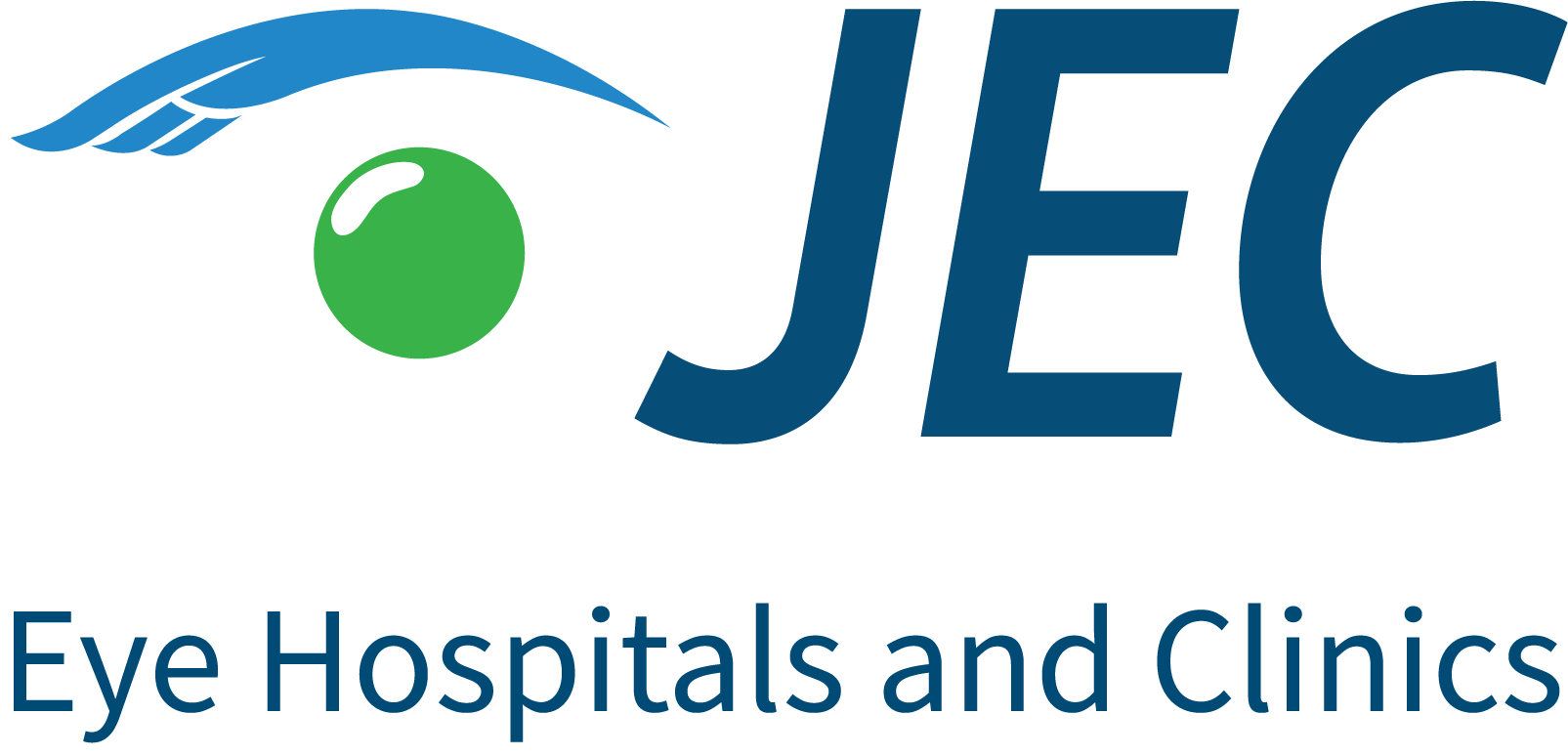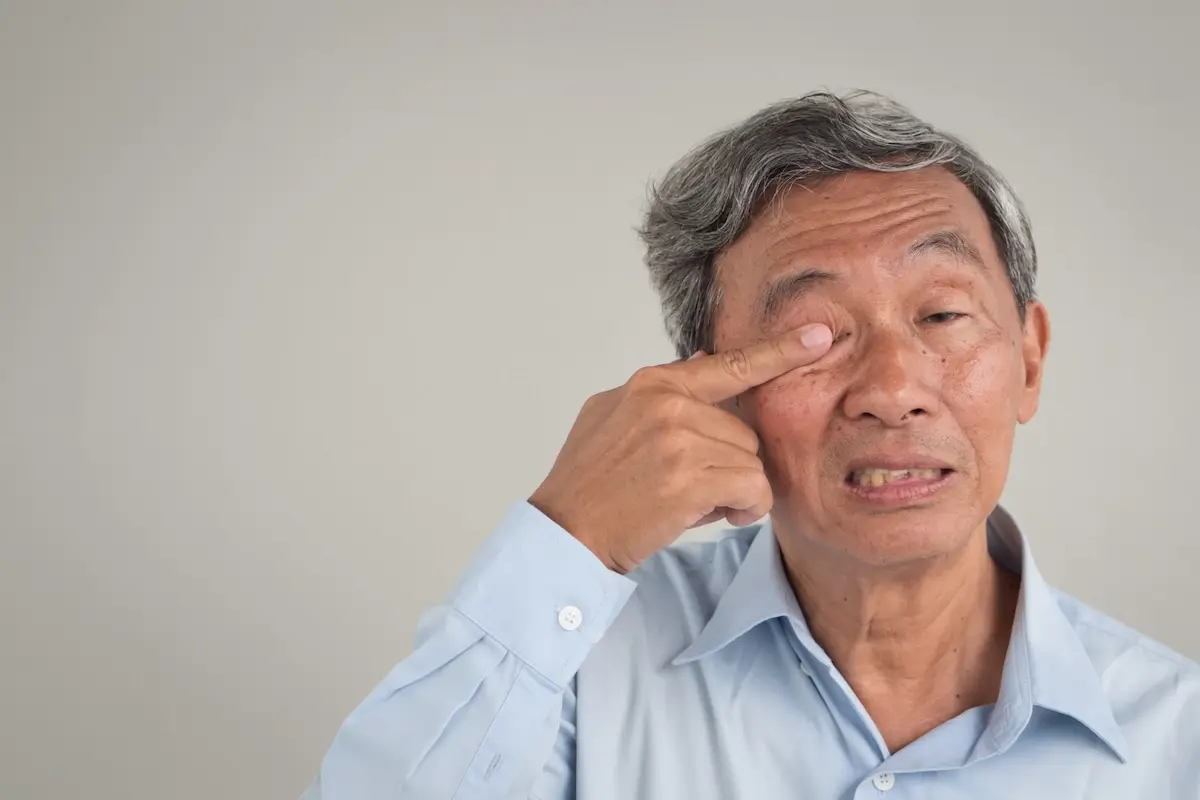By :
Dr. Emma Rusmayani, SpM
Friends, after a week ago we discussed about glaucoma and its various types, now we will discuss more deeply about glaucoma "the thief of sight". This time we will discuss various efforts to detect glaucoma, then its treatment, and also its therapy.
How to diagnose glaucoma?
There are several tests that need to be done so that we can diagnose glaucoma correctly and reliably. These inspections include:
1. Eyeball Pressure Check (Tonometry)
This test aims to measure eye pressure. Anesthetic drops are usually used to numb the eye. This examination can be performed with a Goldman applanation (touching a small part of the eyeball) or with a jet of air. The normal range of eye pressure is between 10-21 mmHg.
2. Evaluation of the Nerve Structure of the Eye
Regarding the evaluation of the eye's nerve structure, it is done manually or with examination tools. This examination is carried out at least 1-2 times a year.
This examination procedure aims to evaluate the optic nerve to see whether there are signs of glaucoma or as an evaluation of disease progression. Sometimes this examination is done using mydriacyl drops to dilate the eye (pupil) so that the details of the optic nerve can be seen clearly. The use of mydriacyl drops can result in temporary blurring or glare whose effects will return to normal within a few hours after being instilled.
There are several additional examinations that can support the accuracy of the examination of the nerve structure of the eye, including:
Heidelberg Retina Tomography (HRT), this examination produces 3D and high-resolution images of the optic nerve. This examination helps the ophthalmologist in assessing the damage to the optic nerve fibers.
Optical Coherence Tomography (OCT). This instrument measures the reflection of the laser beam to assess the 3D structure of the optic nerve fibers.
3. Inspection of Field of View (Perimetry)
Perimetry is an examination of the area of vision in the form of mapping the area that can be seen by the patient. This examination is very important in assisting the ophthalmologist in assessing the severity of glaucoma and for evaluation of therapy. This examination should be carried out in a calm and concentrated state. Sometimes serial examinations are needed to determine the baseline or the picture of the defect that is persistent. This examination is generally carried out 1-2 times a year when the pressure has been controlled to assess progressivity.
4. Examination of the Angle of the Anterior Chamber (Gonioscopy)
Gonioscopy is a routine diagnostic procedure that helps evaluate the condition of the drainage canal to determine whether the type of glaucoma is open or closed angle. The examination was carried out after the patient was given anesthetic drops to make the eyes numb. The examination is performed using a gonioscopy contact lens that is attached to the eyeball. This examination is very safe, painless and has no side effects
5. Eye Cornea Thickness Examination (Pachymetry)
Pachymetry measures the thickness of the cornea, the clear tissue at the front of the eyeball. It is important to do this examination at least once, because the thickness of the cornea can affect the calculation of eye pressure. If the cornea is thicker than normal, eye pressure measurements may show higher than normal results.
Friends need to know that glaucoma screening does not have to be done all at once. The initial examination usually includes an examination of eye pressure and an assessment of the shape of the optic nerve. The doctor will then determine what tests need to be done based on the results of the initial examination and the patient's risk factors.
Indeed, the examinations carried out look a lot, this is because making a diagnosis of glaucoma is not always easy. A person diagnosed with Glaucoma must start on lifelong medication therapy so that the initial diagnosis must be correct to avoid unnecessary drug use. On the other hand, in a person who is already undergoing treatment for glaucoma, periodic evaluation is necessary to ensure that the disease is under control and that there is no progression. Ophthalmologists need to consider many aspects before determining the appropriate treatment for the patient. Treatment is sometimes not the same between patients, depending on various factors including age, severity of glaucoma, or target eye pressure to be achieved. The examination carried out can assist doctors in making the right decisions for the benefit of the patient.
How is glaucoma treated?
Glaucoma is a serious disease that can cause blindness. Unfortunately until now there is no treatment that can cure glaucoma completely. Nerve damage that has already occurred is also difficult to reverse. Therefore, early detection and appropriate treatment is very important.
The goal of glaucoma therapy is to control the progression of the disease. Once detected, glaucoma generally requires lifelong examination and control. Until recently, the goal of glaucoma therapy was to control eye pressure. Maintaining eye pressure within the normal range or in accordance with the target pressure is very important in maintaining vision.
Many patients suspect that glaucoma has healed once the eye pressure drops to the normal range with either medication or surgery. The reality is that glaucoma can only be controlled, but not cured. Sometimes it is necessary to adjust the drug or additional measures depending on the condition of glaucoma or the progress of the disease. Therefore, it is necessary to have regular check-ups even though the eye pressure has reached the normal range, either with medication or surgery. Glaucoma treatment includes treatment with drugs, laser therapy and glaucoma surgery.
Glaucoma Treatment
Antiglaucoma drugs
First-line therapy in glaucoma is generally with the use of antiglaucoma drugs that help drainage to flow more smoothly or reduce the production of eyeball fluid or aqueous humor. In some cases medication can control eye pressure in the long term. Research shows that controlled eye pressure is below the target pressure range, the risk of glaucoma progression will decrease. Therefore, it must be disciplined and regular in using the drug as recommended by the ophthalmologist.
What are the side effects of long-term antiglaucoma eye drops?
All glaucoma medications have both short-term and long-term side effects. Side effects are generally minimal and quite tolerable. The most common are red, dry, stinging eyes when the drops are applied, or very rarely, palpitations, swollen nerves or asthma exacerbations. If the patient complains of side effects that cause extreme discomfort, it should be immediately communicated to the ophthalmologist so that a solution or replacement drug can be found.
What if the doctor decides to change or add drops?
Changing drops does not always mean glaucoma is progressing. Even the replacement of drops is commonplace, considering that usually after a long time our bodies experience tolerance to drugs, so their effectiveness decreases. In the early stages even the doctor may change the drug up to several times to find the most effective and most tolerated by the patient. Again, each patient may have a different response in the effectiveness of lowering eye pressure. Doctors can also add drugs used by patients if eye pressure is difficult to control with just one drug.
The need to use medication regularly
Optometrists will generally look at the patient's ability to use the drug regularly. Usually seen from age, daily activities, independence, financial ability and ease of access to medicines. Sometimes when the drops cannot be used regularly or the side effects cannot be tolerated by the patient in the long term, the ophthalmologist may consider other therapeutic modalities such as laser or surgery.
Tips to help patients be more disciplined in the use of drugs
- Make schedule. Write down the name of the drug and the dose, as well as the number of drugs to be used in one day. The schedule can be placed in an easy-to-see place such as a desk or refrigerator. Some glaucoma medications can be easily identified by the color of the bottle cap.
- If needed, use the alarm as a reminder to drop the medicine.
- Involve family members in helping patients to be more disciplined in the use of drugs.
- If you miss a frequency of using the drug, immediately drop the drug and then return to the original schedule.
- Schedule the use of the drug along with daily activities such as getting out of bed, before going to bed or at mealtimes.
- Please remember the frequency of 2 times a day means every 12 hours, for example 7 am and 7 pm.
- Put the medicine in a place that is easy to see and always with every trip.
- Keep the medicine out of reach of children or direct sunlight.
- Keep the medicine away from the storage of other similar medicines so as to prevent mistakes in dripping medicine.
- Always communicate with your ophthalmologist if there are things that are not comfortable with the use of eye drops.
How to use drops correctly?
Before using drops, wash your hands first. Sit looking up or sleeping position while looking up at the ceiling. Then follow these steps:
- Pull the lower lid sac with your index finger.
- Look up. Put one drop on the lower eyelid bag. Try not to blink, rub your eyes or touch the tip of the bottle to your face or eyes.
- Slowly close your eyes. Press the tip of the inner lid (side of the nose). Try doing this for 1-2 minutes to prevent the drops from flowing directly down your throat.
- Repeat these steps on each eye according to the instructions for use. If there are several drugs that must be instilled at the same time then give a pause between the instillation of about 5-10 minutes.
- If you are not sure that the medicine has been dripped correctly, then drip the medicine again. Our eyelid bag can only accommodate 1 drop of medicine, so if there is an excess of medicine it will be wasted immediately.
Laser Action
There are several types of laser procedures in glaucoma. Laser type is determined based on the type and severity of glaucoma. Laser procedures are usually performed in a polyclinic without the need for hospitalization.
Different types of Laser procedures in glaucoma
1. Argon Laser Trabeculoplasty and Selective Laser Trabeculoplasty (SLT)
- This laser can be an alternative for patients who do not respond to anti-glaucoma drops, and can be repeated up to several times without significant side effects.
- This laser works at very low energy so it is relatively safe.
- This laser works on the trabecular meshwork of the eyeball fluid drainage system so that fluid flow becomes smoother.
- This laser is mainly for open angles.
2. Laser Peripheral Iridotomy (LPI)
- This laser procedure is mainly in angle-closure glaucoma, where the iris blocks the eyeball's fluid drainage channel.
- This procedure creates a channel in the iris, so that fluid can drain smoothly.
3. Laser Trans-sclera Cyclo Photocoagulation (TCP)
- This type of laser is aimed at the eye that is not functioning or functioning very minimally.
- TCP laser can also be an alternative for patients who are already using maximum drugs but do not want surgery.
- This laser acts on the ciliary body which functions to produce eye fluid.
Laser Procedure
- Initially the eye will be dropped with pain medication, then the ophthalmologist will use a special lens to help visualize the area to be lasered.
- By using a slit lamp, the doctor will focus the laser beam precisely on the area to be lasered.
- During the laser procedure, the patient will see a bright light, much like a spotlight on a camera.
- In some sensitive patients, it may feel like the eye is touched but is generally painless.
- After the procedure, the eyes are usually a little red due to minor irritation, and the ophthalmologist will use anti-irritant drops.
- Some laser procedures have a non-permanent effect, so additional laser procedures may be required at a later date.
Glaucoma Surgery
Glaucoma surgery is indicated or is the first choice in patients with eye pressure that remains uncontrolled despite maximal treatment, patients who are sensitive to glaucoma medications, patients with extensive nerve damage, and certain types of glaucoma that are difficult to control with medications.
Surgery for glaucoma
Surgery for glaucoma, like any other eye surgery, uses a microscope to make the structures of the eyeball more visible. Usually the surgical procedure is performed using local anesthesia in the eyeball, so that only the eyeball becomes immune, but the patient remains conscious and can communicate normally. There are several conditions that require the patient to be operated on under general anaesthesia, such as uncooperative patients, pediatric patients, or patients with certain conditions that the ophthalmologist considers more profitable if the operation is performed under general anaesthesia.
During the procedure, especially under local anesthesia, the eye will feel touched but not painful. If the patient still feels uncomfortable, the patient can communicate with the doctor during the operation.
The most frequently performed glaucoma surgery is trabeculectomy surgery, in which a small channel is made on the white of the eye or sclera to make it easier for fluid to drain out of the eyeball. This procedure is performed at the periphery of the eyeball, so it generally doesn't affect central vision much.
Another type of glaucoma surgery is the use of a glaucoma implant to lower eye pressure. Glaucoma implant is a device in the form of a small plate that is placed under the clear membrane of the eye or conjunctiva and serves to help form a channel for collecting eye fluid.
Glaucoma surgery generally takes time to recover, which sometimes varies between individuals depending on age, activity, and type of glaucoma. However, in most patients, this procedure does not require hospitalization although the eye needs to be bandaged for some time.
Postoperatively patients are usually advised to avoid direct water exposure to the eyes for at least one week, not to drive or engage in strenuous physical activity.
What if I have been diagnosed with glaucoma?
Some patients with glaucoma have a greatly reduced visual area. This condition can affect daily activities and is usually not helped much by wearing glasses or contact lenses. In the early stages of glaucoma, there are usually complaints of reduced sensitivity to contrast (distinguishing similar colors with different intensities), glare, sensitivity to light or decreased visual acuity. In patients with very minimal area or visual acuity, the patient's daily activities may be disturbed. Therefore, consultation with the low vision department can be considered. At the low vision center there are many tools that can make it easier for patients to carry out daily activities.
How to work with an ophthalmologist?
As a new glaucoma patient, the ophthalmologist may need to check eye pressure and other glaucoma tests more frequently until the glaucoma is under control. Even if the eye pressure has been declared normal, glaucoma control is still needed at least several times a year. It is very important that the patient feels comfortable and can communicate with the doctor about the condition of glaucoma and what the appropriate treatment options are.
What can the patient do to help make therapy successful?
Identify and record carefully the drugs that have been used. Some drugs have side effects that are quite annoying. Always communicate discomfort in the use of drugs, difficulties in regular use of drugs, patient independence and even the financial burden experienced by patients and families. Associate drug use with activities of daily living, such as eating, waking up or before going to bed. If necessary, use an alarm to minimize non-compliance with drug use. Always have extra medicine available as a backup, especially if the medicine is lost or spilled.
In addition, always communicate with your doctor or other health care provider that you are a glaucoma patient. There are several medications that may make glaucoma worse, including steroids.
You should also schedule your next visit before you leave the consultation room. Moreover, for those of you who plan to travel for a long time, you have to do some control beforehand.
You can also help the success of therapy by making a note of questions about eye conditions, vision function or medications before you check with an ophthalmologist. You also need to make notes about your eye pressure level from each visit, this will make it easier for you to check with a different eye doctor.
Does lifestyle affect glaucoma?
Of course, your lifestyle can have an effect on glaucoma. Therefore, you must eat healthy and nutritious foods, exercise regularly, avoid smoking, reduce caffeine intake, and maintain ideal body weight. Drink water with breaks, don't drink a lot in a short time. Also reduce salt intake, so as to avoid fluid retention. You should also communicate with your doctor before engaging in strenuous physical activity.
Also, try to keep your eyes clean and free from irritation. Do not get into the habit of rubbing your eyes, although some anti-glaucoma drops have side effects such as itching and burning. If you have undergone eye surgery, always try to use eye protection glasses (goggles) in physical activities such as swimming or other sports.
Then, take care of your general health, don't get so hung up on glaucoma that you forget about the health of other body parts that are no less important.
Take care of your emotions and feelings
It is undeniable that glaucoma has side effects in the form of physical and emotional stress due to the threat of permanent vision loss. At the beginning of being diagnosed with glaucoma, patients generally feel surprised, worried, and some even fall into a state of depression. Take the time to study this disease carefully, then you will understand that there are many ways that can be done to control glaucoma. Even if some of your vision has been lost, communicate with your ophthalmologist and low vision division about assistance with active and independent daily activities.
Hopefully this brief description can help answer your curiosity about glaucoma. Early detection is the key to glaucoma prevention. Immediately have your eyes checked regularly, especially in individuals with a high risk of glaucoma. Have your eye health checked at an eye health service center that provides the most complete and leading ophthalmologist and early detection and treatment facility for glaucoma in Indonesia.



 INA
INA